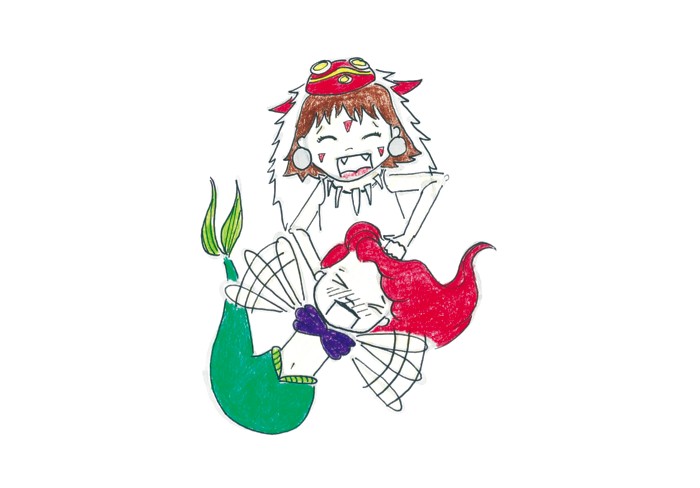
Born to a Japanese mother and British father, I was raised by both Ghibli and Disney. I say “raised” because I read somewhere once that media plays a pivotal role in teaching us about how to interact with the world around us, this includes learning gender roles. We learn who we should fear and who we should not; we learn about the distribution of power and what it is to be powerful; we learn how to treat one another. This is why, as a society, it is so important that we pay attention to what forms of media we consume, particularly about young girls. With this in mind, I began thinking about the lessons Ghibli and Disney had taught me about what it is to be a woman.
Many feminists are critical of Disney and its portrayal of women. Honestly, I would have to agree, despite being a fan. Ghibli is undoubtedly the more feminist of the two, as it features women who are headstrong and rebellious, with storylines that are independent to those of the male leads. Ghibli’s female characters forge relationships of mutual respect rather than seemingly being tamed, as is the case with Disney, whose female depictions often have unrealistic bodies and possess the singular ambition of marrying happily-ever-after — not to mention their lack of marketable skills other than cleaning. To name a few: Sleeping Beauty, Cinderella, Snow White, even my favorite character, Princess Ariel from The Little Mermaid, is justifiably subject to scrutiny. In order for Ariel to achieve her happily-ever-after, she gives up her power of speech to Ursula, “the sea witch.” She ends up running away from her father, charming the prince (without her voice), slaying Ursula and marrying the Prince — the end. It doesn’t exactly scream girl power, I know. If anything, the only character that displayed any feminist ideals would have to be Ursula, who was a self-made businesswoman that was voluptuous, outspoken and independent. All of this isn’t scoring Disney extra feminist points.
In comparison, if we take Ghibli’s Whisper of the Heart, for example, while Shizuku is romantically involved, ultimately it is her hard work and talents that help her achieve happiness and the film doesn’t end with her getting married. Similarly, Princess Mononoke alludes to the development of a bond between San and Ashitaka, yet there is no implication that this relationship will ultimately lead to romance and/or marriage. The film ends with them leading separate lives, and both parties appear perfectly happy with this. Even the female antagonists are never fully evil: Lady Hiroki (Princess Mononoke), despite her violent actions, is shown to have a softer side as she saves women from human-traffickers and also looks after lepers. This display of sympathy towards antagonists is seen in all Ghibli films, which is a direct contrast to Disney’s traditional storylines, which seems to teach us to slay antagonistic men or women who get in the way of our happiness. Ghibli’s females teach us about peacekeeping, negotiation and reconciliation, whereas Disney’s teach us that ultimate happiness is exclusive to the individual and thus you must remove your competition.
One teaches us to pursue our passions and be diplomatic, while the other teaches us to be submissive and to value love and romance above all things. I’m sure many would agree that the latter is hugely problematic. However, in recent years Disney has been making efforts to change this narrative. It’s latest endeavor, announced earlier this year: a production about Sade, an African warrior princess, whose faithful sidekick is a prince. Hopefully it won’t be too long until they introduce a Japanese Princess to their roster (fingers crossed). It’s worth mentioning that Disney has always used pre-existing storylines, whereas Ghibli invents completely new ones, giving it the creative edge. Of course, Ghibli is not completely golden either — its female leads are somewhat masculine in both appearance and manner, which seems to suggest that to be powerfully feminine is to be masculine. I don’t see why we can’t dream of wearing sparkles and still being badass as we do so.
Although our sisters at Disney haven’t always been shining role models, rather than hating on them, I feel in true Ghibli style it would be better to make peace with them. Take what we can from our Disney Princesses with a pinch of salt and use them as exercises to teach young girls and women alike how to be critical, but not hateful, towards the information passed down to us. In other words, picking and choosing aspects from the multitude of sources to reach our own happily-ever-afters.







